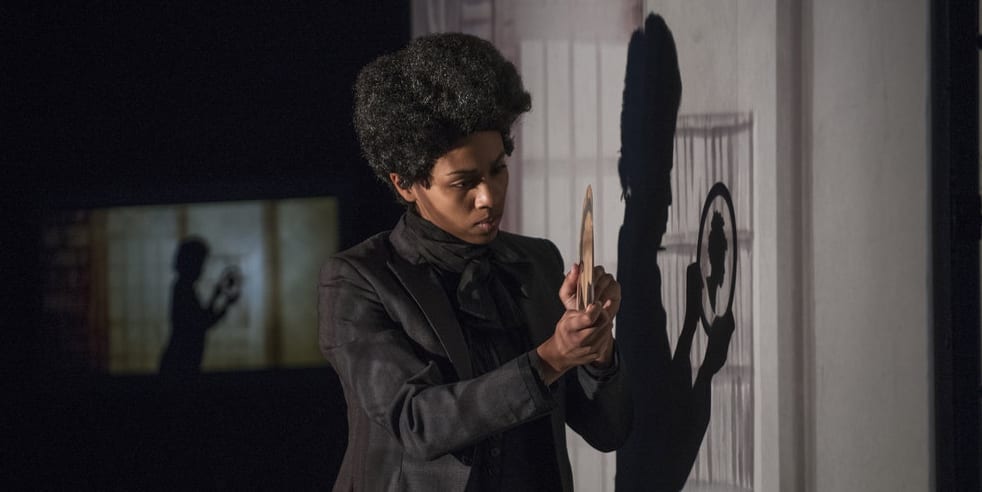Can a monster ever be human? What do we make of a creator that repels its creation? And what of the desire to know our creator? When Mary Shelley wrote “Frankenstein: The Modern Prometheus” in Geneva more than 200 years ago, she created an archetypal, pitiable, grotesque character that, in her uniquely structured horror novel, becomes more human the closer we get to its story.
The Chicago troupe Manual Cinema has visualized Shelley’s formula of telling Frankenstein’s tale in multiple POVs and styles using its signature combination of film, puppets, silhouettes, live music and sound effects. The audience watches the troupe expertly create live-action movies projected onto screens above and behind them, cleverly using costumes, props, and quick changes. It’s a unique sensation: “film” usually implies its work has been created in the past, but here it’s live-feed cinema.
For those who are familiar with the book (or other Frankenstein film iterations), the story opens true – a lone figure, fleeing across forests, islands, finally alone on an ice floe. From there, the narrative pulls back to Shelley herself, writing in a cold London winter, 1815, balancing her creative flow with the demands of motherhood. When tragedy strikes, she and her husband Percy Shelley travel to Geneva to summer with Lord Byron. That rainy, gloomy summer (due to a volcanic eruption in Asia) shuts them in, and a book of ghost stories launches a writing contest between them which inspires another creation and taps her imagination.

